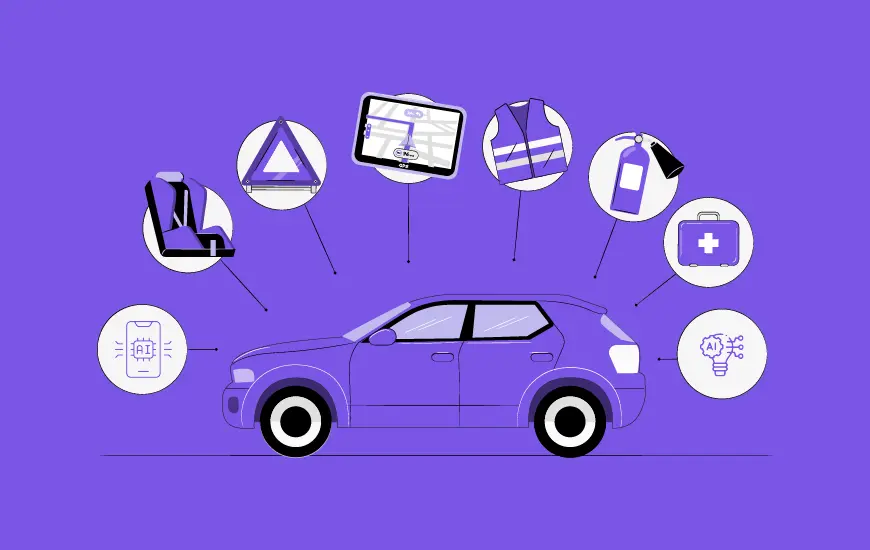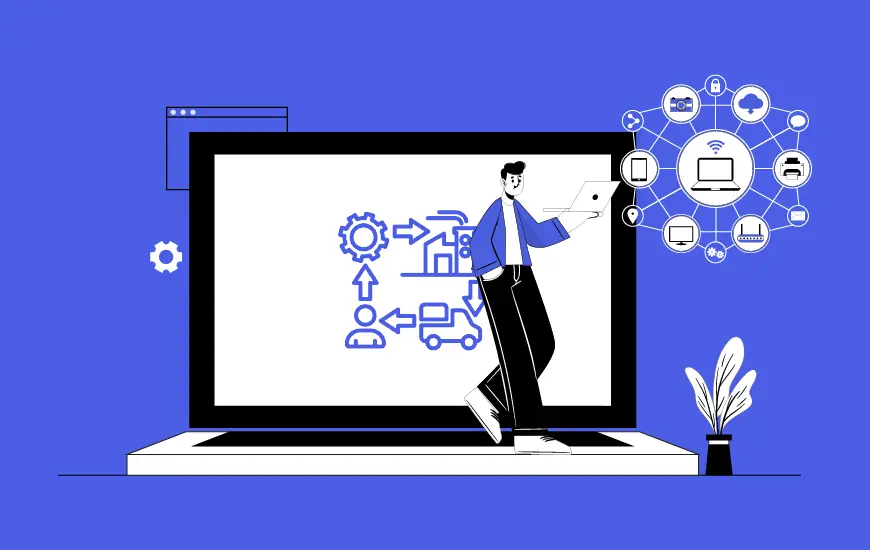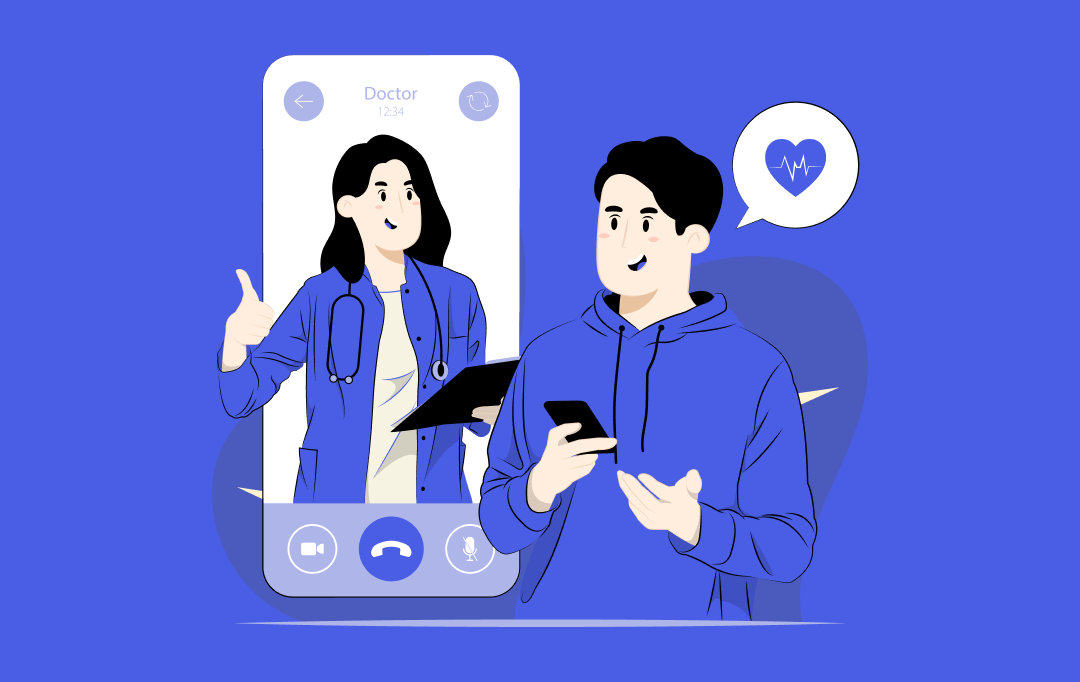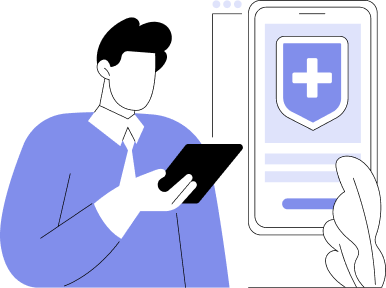- The Rising Threats: What’s Really at Stake with Telehealth Security?
- Why Patient Trust Hinges on Secure Telehealth: The Untold Truth
- The Cost of Inaction: What Happens When Telehealth Security is Compromised
- Securing Your Telehealth Platform: Some Proven Practices
- End-to-End Encryption
- Multi-Factor Authentication
- Regular Security Audits
- Secure Data Storage
- Training and Awareness
- Navigating Compliance: Meeting Legal Standards Without Sacrificing Security
- Data Encryption
- Clear Privacy Policies
- Robust Incident Response Plan
- How Emerging Technologies Can Bolster Telehealth Security
- AI-powered Threat Detection
- Machine Learning
- 5G Networks
- Blockchain for Data Storage
- Advanced Encryption Algorithms
- Gazing into the Crystal Ball: The Future of Secure Telehealth
- Zero Trust Architecture in Healthcare
- Privacy-Enhancing Technologies (PETs)
- Convergence of Physical and Digital Security
- The Role of Quantum-Resistant Cryptography
- Time to Take Action: Transform Your Telehealth Security Today with Appinventiv
- Healthcare Security Expertise That Translates to Telehealth Excellence
- FAQs
Key takeaways:
- Telehealth security is crucial for patient trust and the continued adoption of digital healthcare services.
- The rising tide of cyber threats, from ransomware to inadequate authentication, poses significant risks to patient data and provider reputation.
- Implementing robust security measures like end-to-end encryption, multi-factor authentication, and regular audits is non-negotiable.
- Compliance with regulations like HIPAA and GDPR, alongside the adoption of emerging technologies like AI for threat detection, is vital for a secure telehealth future.
- Failing to prioritize telehealth security can lead to massive financial penalties, severe reputational damage, and a fundamental erosion of patient confidence.
Imagine waking up to the headline: “Major Telehealth Provider Leaks Millions of Patient Records.” This isn’t a dystopian fantasy; it’s a stark reality. According to the 2025 report from AHA.org, last year, the health data of over 259 million Americans were stolen or compromised, setting a new, alarming record. (Source: American Hospital Association). This chilling statistic underscores a truth as critical as medical expertise itself: telehealth security is no longer a luxury; it’s the very bedrock of patient confidence and the future of healthcare.
The rapid ascent of telehealth, fueled by its undeniable convenience and accessibility, has transformed how we receive care. From virtual consultations to remote patient monitoring, digital health has woven itself into the fabric of modern life. Yet, as our reliance on these digital channels grows, so does the privacy and security concerns in telehealth.
This isn’t just about protecting data; it’s about safeguarding the most intimate aspects of a patient’s life and, in turn, their willingness to embrace this life-changing technology. Without a robust telehealth security and privacy framework, the consequences are dire: from data breaches to the collapse of patient trust, to crippling financial penalties from regulatory bodies.
In this blog, we’ll explore why telehealth security and privacy should be a top priority for healthcare providers and provide actionable steps on how to achieve it.
With healthcare cyberattacks reaching record levels in 2025, can your organization afford to wait?
Don’t become the next headline!. Secure your patients’ trust and your organization’s future today.
The Rising Threats: What’s Really at Stake with Telehealth Security?
The integration of telehealth into healthcare systems has created an interconnected digital ecosystem—one that is highly susceptible to cyber threats. As more healthcare organizations adopt telemedicine, the attack surface for cybercriminals widens, making healthcare data a prime target.
Telehealth security threats are not just limited to one-off cyberattacks or data breaches. They can also involve insider threats, malware infections, phishing attempts, and data manipulation. For example, a ransomware attack can lock healthcare providers out of their systems, demanding exorbitant payments to restore patient records. Without the proper risk management in telehealth, these incidents can disrupt services, jeopardize patient health, and lead to massive financial losses.
A comprehensive global survey found that 52% of telehealth providers have experienced cases where patients refused virtual visits, citing mistrust in technology or concerns about privacy and data safety. This statistic represents more than lost appointments—it signifies a fundamental breakdown in the digital healthcare trust equation.
Key Risks Include:
- Cyberattacks: Ransomware, phishing, and DDoS attacks specifically targeting vulnerable telehealth apps and underlying infrastructure.
- Non-compliance: Failing to meet strict regulatory standards like HIPAA compliance for telehealth puts patient privacy and security at severe legal and financial risk.
- Lack of Encryption: Without proper data encryption for both data at rest and in transit, patient data is vulnerable to unauthorized interception and access.
- Inadequate Authentication: Weak passwords or the absence of biometrics and multi-factor authentication (MFA) can create easy entry points for unauthorized access to patient data security.
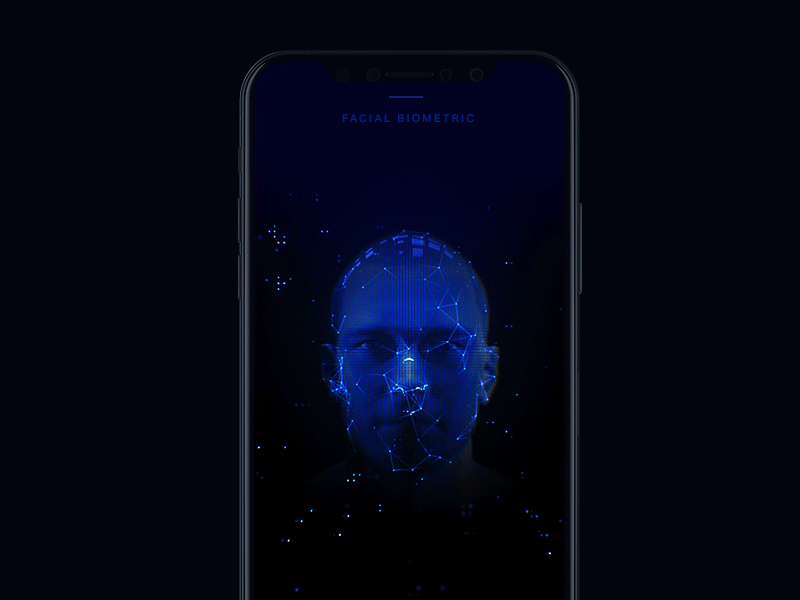
Why Patient Trust Hinges on Secure Telehealth: The Untold Truth
Patient trust is the bedrock upon which telemedicine thrives. Telehealth services are no longer seen as a “nice-to-have” but an essential part of healthcare delivery. Yet, a major threat to its adoption remains patient privacy concerns in telehealth.
Studies show that patients who experience or hear about telehealth privacy concerns or data breaches become significantly less likely to continue using digital health services. The psychological impact of security fears extends far beyond individual appointments, creating lasting hesitation about engaging with virtual care platforms.
Psychologically, trust in healthcare services is deeply tied to the perception of security. When patients use telehealth platforms, they are not just trusting the provider with their medical information; they are entrusting their private lives to digital platforms. A secure telehealth platform reassures patients that their personal and medical data are being handled with the utmost care, safeguarding them from identity theft, fraud, or worse.
How Trust Translates into Better Outcomes:
- Retention and Satisfaction: Secure telehealth platforms reduce the likelihood of patient drop-off by fostering confidence. When patients feel their patient data protection is assured, they are more likely to continue using the service.
- Patient Empowerment: When patients feel confident in the telehealth security of their data, they are more likely to engage openly with the platform, share comprehensive health information, and take ownership of their health decisions.
- Long-Term Relationships: Trust in telehealth security fosters lasting relationships between patients and healthcare providers, leading to continuity of care and ultimately, better health outcomes over time.
The Cost of Inaction: What Happens When Telehealth Security is Compromised
The financial impact of telehealth security breaches is far-reaching, impacting both patients and healthcare providers profoundly.
For patients, the cost isn’t just financial; it’s deeply personal:
- Identity Theft and Medical Fraud: Compromised PHI can be used to open fraudulent credit lines, receive medical services under false pretenses, or even alter medical records, leading to dangerous misdiagnoses.
- Emotional Distress and Loss of Privacy: The violation of personal data can cause significant anxiety, fear, and a sense of betrayal, eroding the fundamental trust in their healthcare providers.
- Reluctance to Seek Care: Fear of future breaches can deter patients from utilizing telehealth, or even traditional healthcare, impacting their overall health outcomes.
For providers, the impact can be existential:
- Financial Penalties: Violations of regulations like HIPAA compliance for telehealth can result in multi-million dollar fines. The average cost of a healthcare data breach, which hit $9.77 million in 2024, speaks volumes about the financial exposure.
- Reputational Damage: A breach can severely tarnish a healthcare organization’s brand, leading to a loss of patient confidence and significant patient attrition. Rebuilding this trust can take years and substantial investment.
- Operational Disruption: Recovery from an attack, including system downtime, data restoration, and forensic investigations, can cripple operations and divert critical resources away from patient care.
- Legal Liabilities: Healthcare organizations face potential class-action lawsuits and individual legal claims from affected patients, adding to the financial and reputational burden.
As industry leaders consistently emphasize, “Cybersecurity in healthcare is no longer just an IT problem; it’s a business risk and a patient safety risk,” highlighting the undeniable link between security posture and clinical outcomes. This makes telehealth security absolutely indispensable.
Securing Your Telehealth Platform: Some Proven Practices
The good news is that telehealth security and privacy concerns can be mitigated with a proactive, multi-layered approach. Here’s how healthcare providers can fortify their telemedicine apps and platforms by using telemedicine security best practices:
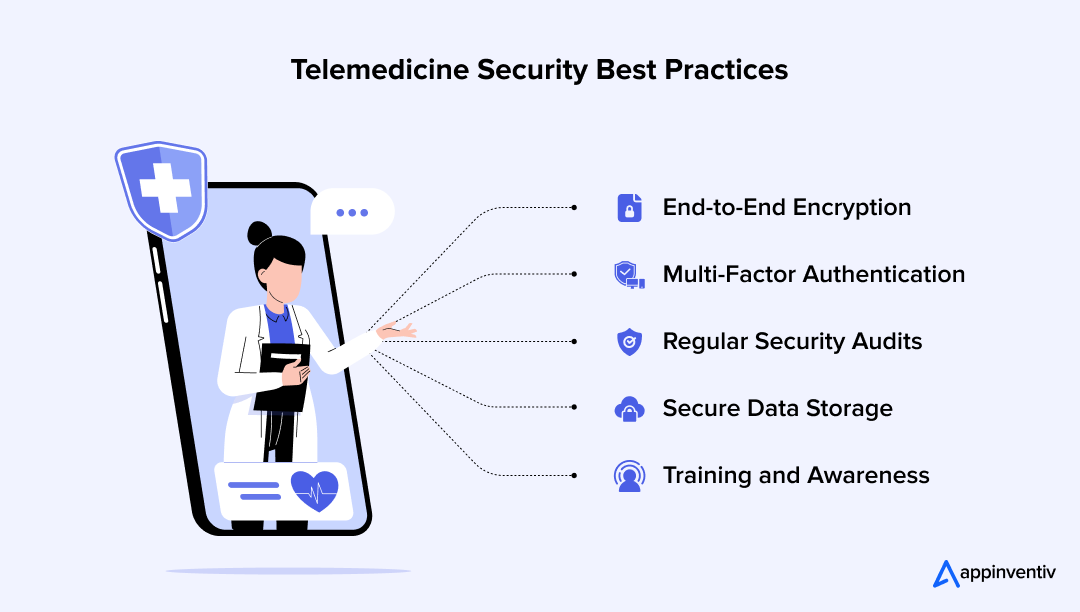
End-to-End Encryption
Implementing robust end-to-end encryption for all data ensures that patient information is secure both at rest (when stored) and in transit (when communicated), preventing unauthorized access. This is a foundational telemedicine security best practice.
Multi-Factor Authentication
MFA provides an added layer of security beyond traditional passwords. By requiring multiple forms of verification, it significantly reduces the risk of unauthorized access due to weak or compromised credentials, fortifying patient data protection.
Regular Security Audits
Conducting frequent and thorough security audits of your systems, networks, and applications helps identify vulnerabilities and compliance gaps. Regular penetration testing simulates real-world attacks, allowing you to patch weaknesses before they can be exploited, which is critical for telehealth compliance and security.
Secure Data Storage
Ensuring data storage complies with GDPR, HIPAA, and other relevant standards is critical for protecting sensitive patient information. Using secure, HIPAA-compliant cloud services ensures patient data is stored in a protected environment that meets both privacy and security regulations. Access controls and data segregation further protect data from unauthorized access. Regular compliance audits are essential to ensure alignment with legal requirements like HIPAA and GDPR, mitigating risks associated with data storage.
Training and Awareness
Staff are often the first line of defense. Regular, comprehensive training on telehealth security protocols, phishing attacks, social engineering tactics, and the importance of protecting patient privacy is essential. A well-informed team acts as a vital human firewall.
By integrating these telehealth security best practices, providers can significantly reduce the risk of data breaches and enhance patient confidence.
Also Read: How Much Does Telemedicine App Development Cost?
Explore Appinventiv’s expertise in building secure, compliant, and cutting-edge digital health solutions.
Navigating Compliance: Meeting Legal Standards Without Sacrificing Security
Adhering to telehealth compliance and security regulations is essential, but it should not hinder operational efficiency. Key regulatory frameworks like HIPAA compliance for telehealth and the General Data Protection Regulation (GDPR) ensure that healthcare providers meet the required standards for patient data protection.
Here’s how to maintain compliance while enhancing telehealth security:
Data Encryption
Both HIPAA and GDPR strictly require robust encryption for sensitive data. This ensures that only authorized individuals can access patient records, a core component of telehealth security and privacy.
Clear Privacy Policies
Ensure that your privacy policies are easily accessible, transparent, and clearly outline how patient data will be collected, handled, stored, and protected. Patients must understand their rights and how their information is used.
Robust Incident Response Plan
Having a detailed and regularly tested incident response plan is critical. This plan outlines the steps for identifying, containing, and remediating security incidents, including clear protocols for notifying affected patients and regulatory bodies in case of a breach, fulfilling a key aspect of HIPAA compliance telehealth.
By integrating these practices into daily operations, healthcare organizations can effectively meet HIPAA compliance for telehealth without compromising robust security.
How Emerging Technologies Can Bolster Telehealth Security
As the digital landscape evolves, so do the tools available to secure telehealth platforms. Cutting-edge technologies such as AI, blockchain, and advanced cryptography are at the forefront of transforming telemedicine app security.
Technologies To Reinforce Telehealth Security
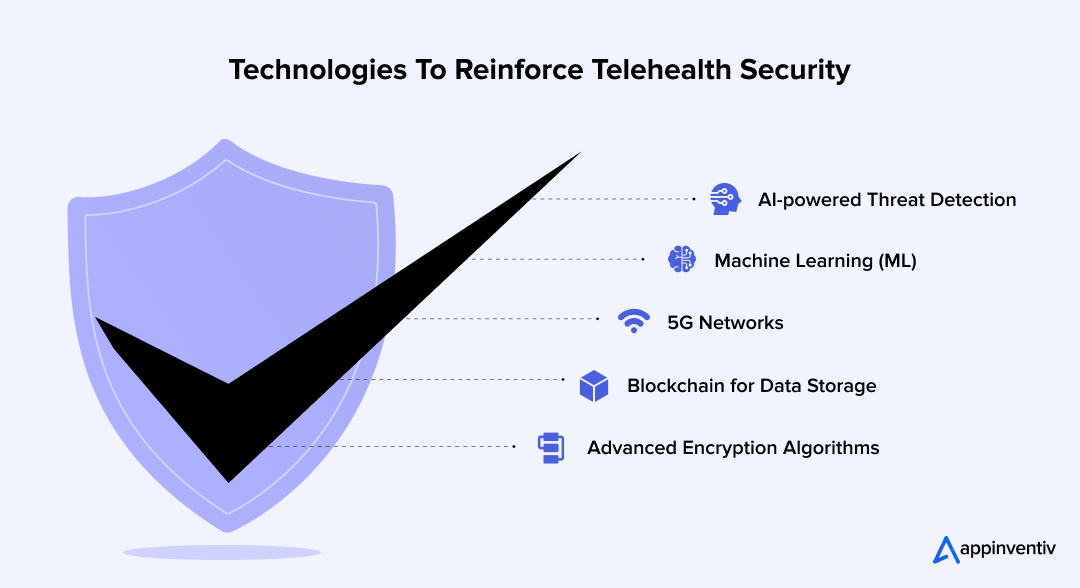
AI-powered Threat Detection
Artificial Intelligence systems in healthcare can analyze vast datasets of network traffic and user behavior in real-time. This allows AI to detect unusual activity or anomalies that could indicate potential security breaches, flagging them before they escalate. This proactive telehealth threat detection significantly enhances telehealth security.
Also Read: AI in Telemedicine: Use Cases, Challenges & Future Trends
Machine Learning
Machine Learning (ML) in healthcare is becoming essential in enhancing telehealth security by providing predictive analytics to detect potential security threats in real-time. ML algorithms can analyze patterns in patient data and system behavior to identify anomalies or vulnerabilities before they are exploited. Additionally, ML-driven automated response mechanisms can quickly address threats, ensuring proactive defense against cyberattacks and improving overall patient data protection.
5G Networks
With the rise of 5G, faster and more reliable connections will improve telehealth features and accessibility, but also increase the need for robust telehealth threat detection and protection against new attack vectors inherent to high-speed, always-on connectivity.
Blockchain for Data Storage
Blockchain technology in healthcare offers a decentralized and immutable method for storing patient data. Its cryptographic security ensures that once a record is entered, it cannot be altered, reducing the risk of tampering and enhancing the integrity of patient data protection.
Advanced Encryption Algorithms
Beyond current standards, research into quantum-resistant cryptography is underway. These advanced algorithms may soon play a role in protecting patient data from even the most sophisticated future cyberattacks, including those leveraging quantum computing capabilities.
Also Read: 7 Telemedicine Trends Shaping the Future of Healthcare
Gazing into the Crystal Ball: The Future of Secure Telehealth
Looking ahead, telehealth security will continue to be shaped by innovations in technology and evolving regulatory standards. As telehealth grows, healthcare providers will need to stay ahead of the curve by adopting next-generation security solutions.
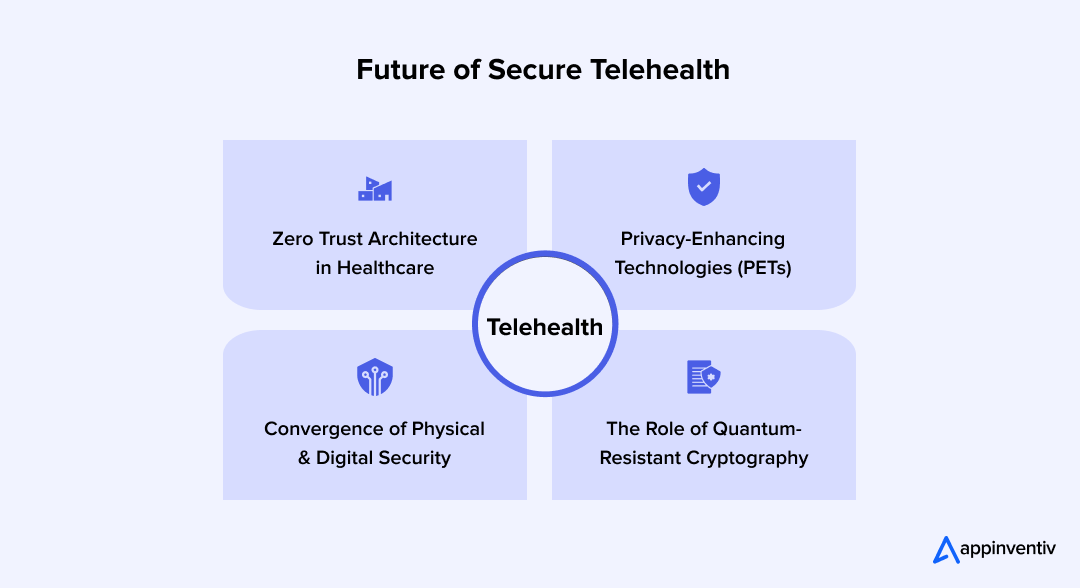
Zero Trust Architecture in Healthcare
This revolutionary security model mandates that no user, device, or application is implicitly trusted, regardless of their location. Every access request is rigorously authenticated and authorized, significantly enhancing patient data protection by minimizing the impact of compromised credentials and limiting lateral movement by attackers. This is a fundamental shift in telehealth security.
Privacy-Enhancing Technologies (PETs)
As the demand for data-driven insights grows, so does the need to protect individual privacy. PETs, such as homomorphic encryption (allowing computations on encrypted data without decrypting it) and differential privacy (adding statistical noise to data to prevent individual re-identification), offer pathways to analyze sensitive health data while safeguarding telehealth privacy concerns.
Convergence of Physical and Digital Security
With the rise of IoT in healthcare and remote patient monitoring, the lines between physical and digital security are blurring. Future telehealth security will involve integrated solutions that secure both the digital transmission of data and the physical integrity of devices and environments where care is delivered.
The Role of Quantum-Resistant Cryptography
Looking further ahead, the potential advent of quantum computing poses a threat to current cryptographic standards. Research into quantum-resistant cryptography is underway to develop new algorithms capable of protecting patient privacy and sensitive health data from future quantum attacks, ensuring the long-term patient data security of medical records.
Time to Take Action: Transform Your Telehealth Security Today with Appinventiv
The cybersecurity landscape in healthcare organizations has never been more challenging or consequential. With 91% of healthcare data breaches involving ransomware and patient trust hanging in the balance, organizations cannot afford to delay implementing comprehensive telehealth security measures.
The evidence is overwhelming: organizations that prioritize telehealth security gain competitive advantages, reduce liability exposure, and most importantly, maintain the patient trust that forms the foundation of effective healthcare delivery. As cybersecurity experts warn, the threat will only become more sophisticated, making proactive security investment essential for organizational survival and the future of secure telehealth.
Your Next Steps Should Include:
- Immediate Risk Assessment: Conduct a comprehensive security audit of your current telehealth infrastructure, identifying vulnerabilities and compliance gaps related to telehealth security and privacy.
- Strategic Planning: Develop a multi-year cybersecurity roadmap that incorporates emerging technologies and regulatory requirements, focusing on telehealth compliance and security.
- Technology Partnership: Partner with a reputed telemedicine app development company that understands the unique security challenges of digital health platforms and specializes in building secure telehealth solutions.
At Appinventiv, we understand that telehealth security isn’t just about technology—it’s about protecting the trust that patients place in their healthcare providers. As a leading healthcare app development company, we’ve helped healthcare organizations across the globe implement robust security frameworks that protect patient data while enabling innovative care delivery models.
Healthcare Security Expertise That Translates to Telehealth Excellence
Our deep understanding of healthcare data security comes from successfully delivering complex healthcare applications that handle the most sensitive patient information. This expertise directly translates to superior telehealth security implementations:
- Soniphi: We developed Soniphi, a revolutionary healthcare application that assesses vocal information to provide complete well-being analysis reports. The platform required sophisticated security measures to protect highly sensitive biometric voice data, the same level of protection essential for telehealth platforms handling patient consultations and voice communications.
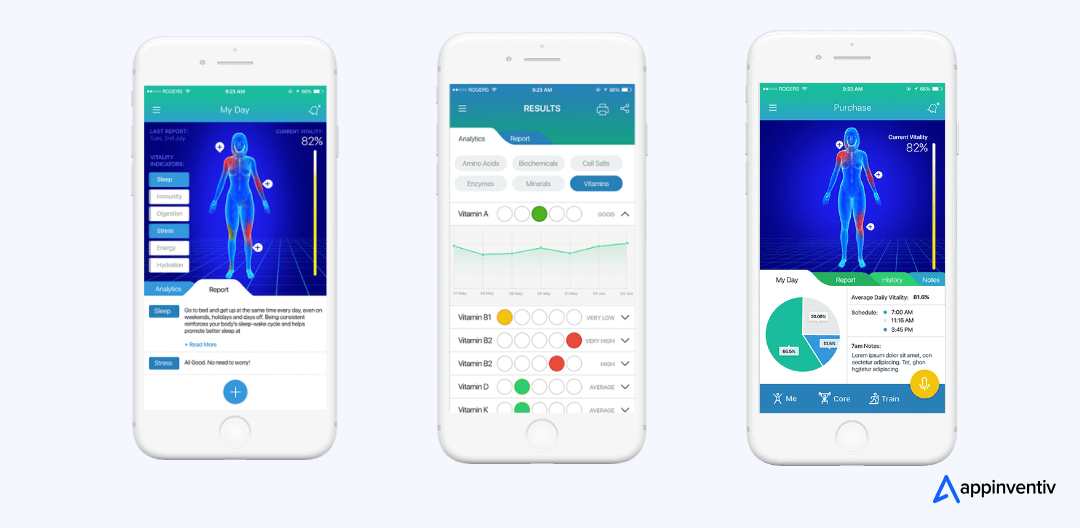
- Health-e-People: Our partnership with Health-e-People demonstrates our capability in creating secure health assessment platforms that manage complex patient data workflows. This experience in building robust health record software directly applies to telehealth platforms that must securely handle patient information, consultation records, and care coordination data.
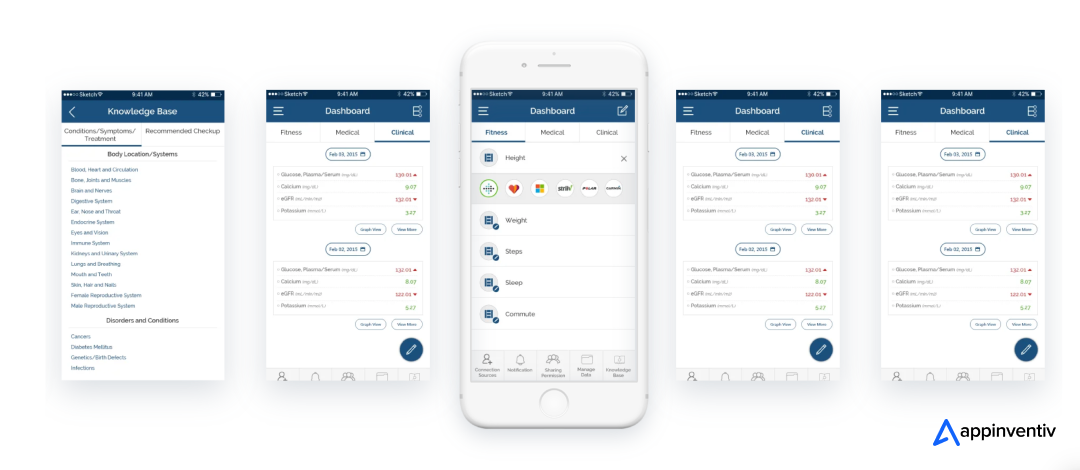
- DiabeticU: Our tech experts developed DiabeticU, a diabetes management application that enables users to track blood sugar levels, medication, and dietary habits. The security frameworks we implemented for chronic disease management translate perfectly to telehealth platforms requiring continuous patient monitoring and secure health data transmission.
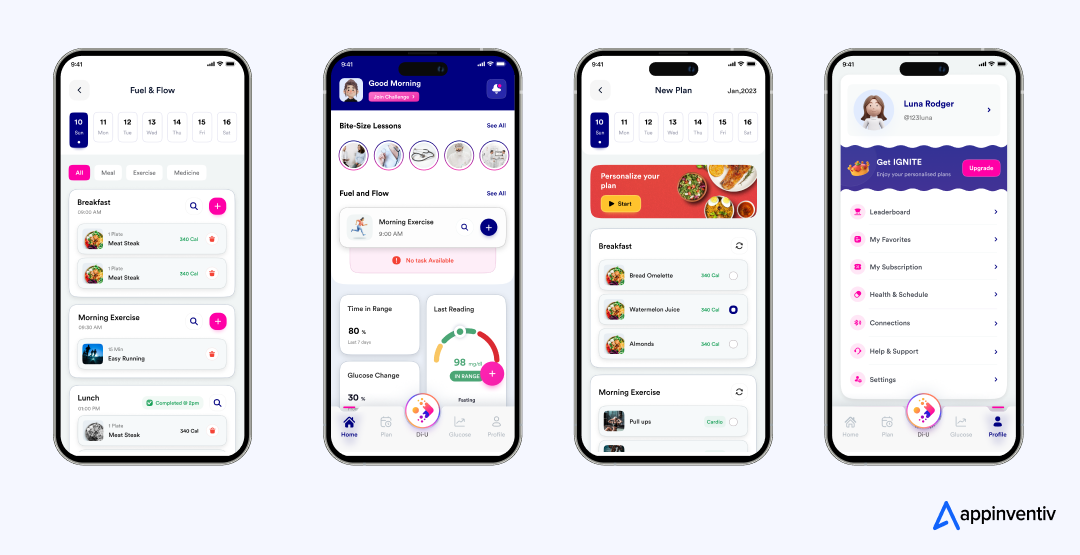
These healthcare projects reflect our comprehensive security methodology that ensures every telehealth platform we develop meets the highest protection standards. Our comprehensive approach addresses every aspect of telehealth security, from initial risk assessment and compliance planning to ongoing monitoring and incident response.
We combine deep healthcare industry expertise with cutting-edge security technologies to create next-gen telehealth platforms that meet today’s requirements while preparing for tomorrow’s challenges. Don’t let privacy and security concerns in telehealth prevent your organization from realizing the full potential of telehealth.
Contact Appinventiv today to discuss how we can help you build secure, compliant, and patient-trusted telehealth platforms that drive both clinical outcomes and business success.
FAQs
Q. Why is telehealth security important?
A. Telehealth security is important because it directly impacts patient trust, protects highly sensitive medical data from breaches, ensures compliance with critical regulations like HIPAA, and safeguards the reputation and operational continuity of healthcare providers. Without robust security, the benefits of telehealth—convenience, accessibility, and improved outcomes—are undermined, leading to patient apprehension and potential abandonment of services.
Q. Why is data security key for patient confidence?
A. Data security is key for patient confidence because healthcare involves sharing deeply personal and sensitive information. When patients feel their medical records and personal health information (PHI) are vulnerable, they become hesitant to use digital platforms for care. Strong patient data protection assures them that their privacy is respected and their information is safe from misuse, fostering the trust necessary for open communication and successful treatment outcomes in a telehealth setting.
Q. How does telehealth security impact patient retention and trust in healthcare platforms?
A. Telehealth security directly impacts patient retention and trust by influencing their perception of reliability and safety. If patients experience or hear about privacy and security concerns in telehealth, they are significantly less likely to continue using those services, leading to high churn rates. Conversely, a demonstrably secure telehealth platform builds confidence, encourages consistent engagement, and enhances overall patient loyalty, turning security into a competitive advantage and a driver for long-term retention.
Q. What are the HIPAA and GDPR compliance requirements for enterprise telehealth platforms?
A. HIPAA requires secure storage and transmission of patient data, with access controls and audit logs. GDPR mandates data protection and privacy, including data subject rights, consent, and secure processing for EU residents.
Q. How can AI and Machine Learning enhance telehealth security for large healthcare organizations?
A. Here are some of the most efficient ways AI and ML can enhance telehealth security for large healthcare organizations.
Anomaly Detection: AI and ML can analyze data patterns to detect unusual activities, flagging potential security threats early.
Predictive Threat Intelligence: They can predict and prevent future security breaches by analyzing past incidents and identifying trends.
Automated Response: AI can autonomously respond to threats, minimizing human intervention and reducing response time.
Optimized Patient Authentication: AI-driven systems can enhance patient verification, improving security during virtual consultations.
Real-Time Vulnerability Detection: ML algorithms can continuously monitor and identify vulnerabilities, ensuring rapid patching and system updates.
Q. What is a Zero Trust Architecture in healthcare, and how is it implemented for telehealth?
A. Zero Trust Architecture ensures that no one, inside or outside the network, is trusted by default. For telehealth, it involves continuous verification, strong authentication, and strict access control.
Q. What are the best practices for secure data storage and exchange in cloud-based enterprise telehealth solutions?
A. The best practices for secure data storage and exchange in cloud-based enterprise telehealth solutions you can use are:
- Use encrypted storage to protect sensitive patient data.
- Implement role-based access controls to limit access based on user roles.
- Regularly update security patches to address vulnerabilities.
- Ensure compliance with relevant regulations (e.g., HIPAA, GDPR) for secure data exchange.
Q. How do we mitigate ransomware and cyberattack risks in our telehealth infrastructure?
A. You can follow the below practices to mitiagte cyberattack risks in telehealth:
- Regular Backups: Ensure you have frequent, secure backups of critical data to recover quickly if attacked. Backups should be encrypted and stored separately from your primary systems.
- Strong Encryption: Encrypt all sensitive data both in transit and at rest to protect it from unauthorized access. This ensures that even if data is intercepted, it remains unreadable.
- Multi-Factor Authentication (MFA): Implement MFA across your systems to add an extra layer of security. This reduces the likelihood of unauthorized access to critical systems.
- Employee Training: Train employees regularly on cybersecurity best practices, phishing awareness, and how to spot potential threats. A well-informed team is your first line of defense.
- Network Segmentation: Divide your network into segments to limit the spread of potential attacks. Critical systems and sensitive data should be isolated from less secure parts of your network.
Q. What are the legal and financial consequences of a telehealth data breach for a healthcare enterprise?
A. A data breach can result in fines, lawsuits, reputational damage, and loss of patient trust. Financial penalties can be severe under HIPAA and GDPR regulations.
Q. What kind of security audits and penetration testing are crucial for enterprise telehealth platforms?
A. Here are some widespread security audits and penetration testing methods:
- Vulnerability Assessments
- Penetration Testing
- Compliance Audits
- Security Reviews
Q. How to build a robust incident response plan for telehealth security incidents?
A. A robust incident response plan should start with identifying the security breach, then contain and mitigate the damage. Next, notify key stakeholders, conduct a forensic investigation, and update security policies to prevent similar incidents in the future. Regular testing and updates to the plan are also crucial.
Q. What are Privacy-Enhancing Technologies (PETs) and their relevance to enterprise telehealth data privacy?
A. Privacy-Enhancing Technologies (PETs) reduce data collection, ensure strong encryption, and give individuals control over their data. In telehealth, PETs help safeguard patient information, ensure compliance with privacy laws like HIPAA, and build trust with patients by enhancing data security.
Q. How does 5G impact telehealth security for large-scale deployments?
A. 5G boosts telehealth by offering faster data transfer and lower latency, improving real-time services. However, it also increases exposure to security risks. To mitigate these, 5G requires enhanced encryption, secure network slicing, and strict access controls to ensure safe and reliable telehealth operations.


- In just 2 mins you will get a response
- Your idea is 100% protected by our Non Disclosure Agreement.

Identity and Access Management in Healthcare: Core Components, Challenges, and Best Practices
Key Takeaways Healthcare runs on trust, and Identity and Access Management is what keeps that trust intact by protecting every login, record, and device. A modern IAM system does more than secure passwords, it connects people, systems, and data safely across hospitals and clinics. AI and automation are changing how IAM works, spotting risks faster…
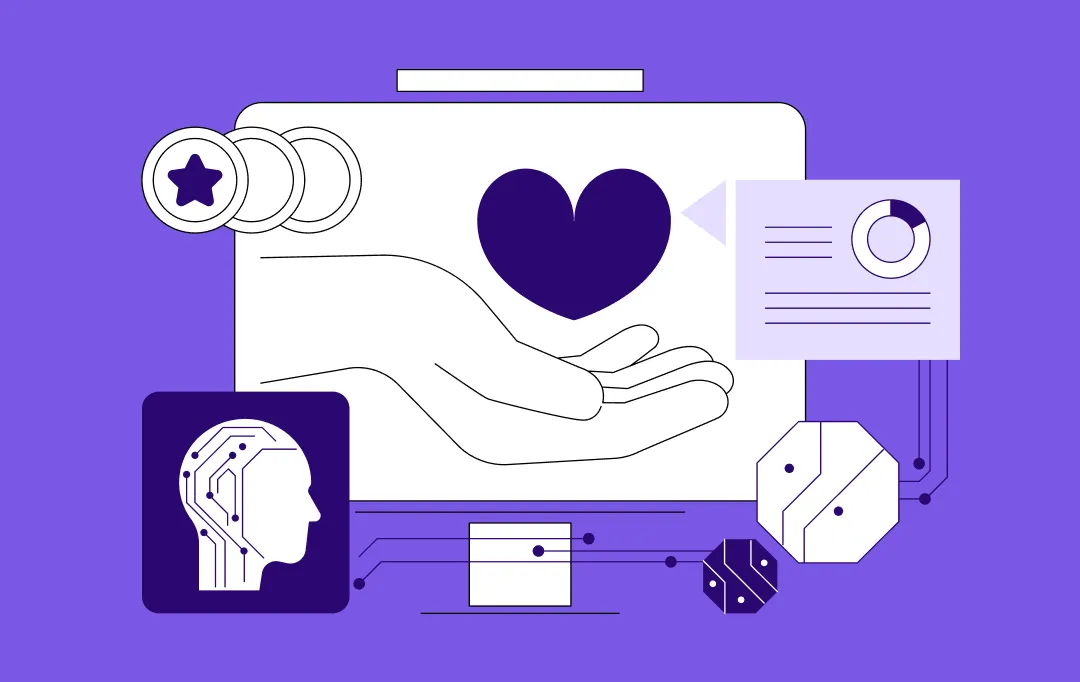
How Telemedicine is Breaking Barriers in Mental Health Care Access and Delivery
Key Takeaways Telemedicine is helping healthcare systems close gaps caused by clinician shortages, long wait times, and limited physical infrastructure. Virtual mental health care boosts access beyond geographical barriers while reducing no-shows, travel barriers, and scheduling conflicts. Hybrid models, remote monitoring, and AI-supported assessments make care more continuous, proactive, and scalable. Partner with Appinventiv to…
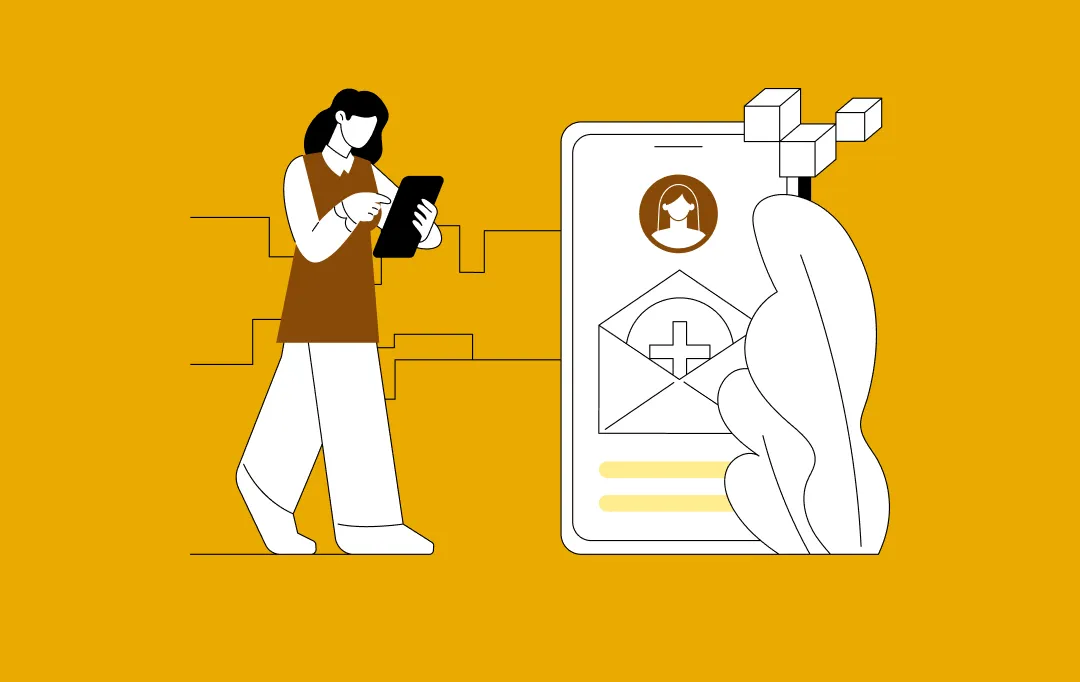
Chiropractor App Development: Complete Guide for Clinics
Key Takeaways Chiropractor apps succeed when they solve real clinic workflows, not just scheduling and bookings. Choosing the right app type early prevents data silos, rework, and scalability issues later. MVP-first development helps clinics validate adoption before investing in full platforms. Compliance, integrations, and analytics must be built in from day one, not added later.…








